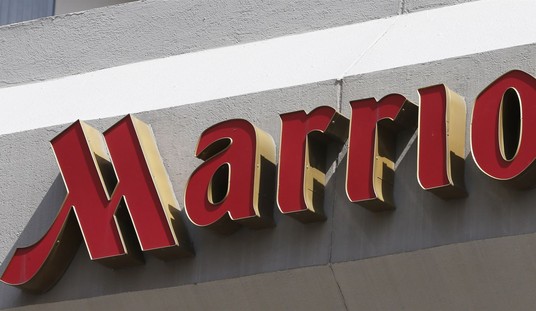Richard A. Serrano of the Los Angeles Times broke an exclusive story this morning that the Bureau of Alcohol, Tobacco, Firearms and Explosives (ATF) had top Operation Fast and Furious gun smuggler Manuel Fabian Celis-Acosta in custody while he was attempting to smuggle ammunition into Mexico, and made the decision to let him go:
Seven months after federal agents began the ill-fated Fast and Furious gun-tracking operation, they stumbled upon their main suspect in a remote Arizona outpost on the Mexican border, driving an old BMW with 74 rounds of ammunition and nine cellphones hidden inside.
Detained for questioning that day in May 2010, Manuel Fabian Celis-Acosta described to agents from the Bureau of Alcohol, Tobacco, Firearms and Explosives his close association with a top Mexican drug cartel member, according to documents obtained this weekend by the Times/Tribune Washington Bureau.
The top Fast and Furious investigator, Special Agent Hope MacAllister, scribbled her phone number on a $10 bill after he pledged to cooperate and keep in touch with investigators.
Then Celis-Acosta disappeared into Mexico. He never called.
Had they arrested him red-handed trying to smuggle ammunition into Mexico, Fast and Furious might have ended quickly. Instead, the program dragged on for another eight months, spiraling out of control.
If you choose to believe Attorney General Eric Holder, the multi-agency strike force composed of assets from the ATF, Drug Enforcement Administration (DEA), Federal Bureau of Investigation (FBI), Internal Revenue Service (IRS), Criminal Investigation Division (IRS-CID), Department of Homeland Security, and (if conducted legally with waivers from the Arms Export Control Act) the State Department wanted to catch drug cartel higher-ups by using this gun-walking plot. To anyone even remotely familiar with how professional criminals use guns, the Department of Justice’s public justification for Operation Fast and Furious never made sense, and how Operation Fast and Furious was designed to work discredits the attorney general’s claim.
The DOJ claims that higher-ups were the plot’s goal. This is entirely untrue.
In the world of drug cartels, firearms are a disposable consumable, much as copy paper is in a normal company. Just as Warren Buffett has far more pressing issues on his plate than determining where to buy copy paper and other office supplies, cartel ringleaders have more pressing concerns. With shifting alliances to maintain and exploit, and the need to cultivate relationships with politicians and law enforcement officers across international borders, they simply don’t have time for what amounts to obtaining consumable office supplies in their line of work.
Ask any federal law enforcement agent and they will corroborate that fact. Fast and Furious never would have caught higher-ups, because higher-ups simply aren’t involved in such pedestrian matters as small-batch gun acquisition. Even if the ATF/DEA/FBI had tracked the guns, and had worked with Mexican authorities, the operation never would have been able to bring down cartel leaders. No cartel gun investigation of this type ever has, and none ever will. The official line provided by Attorney General Holder is a bald-faced and rather obvious lie.
We know, beyond all reasonable doubt, that Operation Fast and Furious was not in any way related to the DOJ’s official explanation for its existence. The way DOJ carried out the operation and its metrics for “success” also verify that the operation was never designed to lead to a case against cartel leaders.
In any criminal investigation, law enforcement officers have to build a case by tying evidence to actors. In Operation Fast and Furious, the “evidence” would have been the firearms smuggled across the border with ATF’s protection to the cartels. In order to tie the guns to the cartel leaders, the guns would have to be tracked to the possession of the cartel’s leaders, or would have to be tracked to the leaders ordering weapons. This would require extensive surveillance of the weapons inside of Mexico, where the cartels and their leaders operate.
But Operation Fast and Furious was never designed to follow the weapons over the border, in even the most cursory manner. Once the gun shipments went over the Mexican border, the operation was designed, from the ground up, to wait for these guns to turn up at crime scenes. This is not a subject for debate, but an explanation as provided in sworn congressional testimony from multiple ATF agents, and in written communications.
The publicly stated rationale does not come close in any way to the operation that was actually run.
What was Operation Fast and Furious set up to accomplish? You need to look no further than the operational plan itself to discover what the true goal of the plot was.
Fast and Furious was dependent on ATF officials bullying Arizona gun dealers into going along with the straw purchases of thousands of firearms. If they did not comply, they knew they faced the possibility of having their federal firearms licenses yanked and their livelihoods destroyed. At the point of purchase, the firearms obtained by straw purchasers were documented on a ATF Form 4473, a form used for logging purposes and for background checks. Section D of the document records the manufacturer or importer, model number, serial number, type, and caliber or gauge of each weapon purchased. The ATF then harvested this data, and logged it in a watch list.
From there, all they did was wait.
There was no attempt to track the weapons in Mexico. The operation was conducted without the knowledge of the Mexican government, even as thousands of weapons flowed over the border. Even ATF agents in Mexico testified that they were kept in the dark about the operation.
They waited, without any attempt to interdict the weapons or trace them to anyone from the already known circle of straw buyers that existed before the operation was approved.
They waited until someone died.
As mentioned earlier, firearms are a disposable consumable in the cartel trade. They are used by the gross, and discarded after use. When a weapon is used, the rifling that provides the stabilizing spin to a bullet leaves a unique and traceable “fingerprint” on each bullet it fires. By collecting bullets at a crime scene, law enforcement scientists use ballistic fingerprinting to match a recovered gun to a specific crime. Cartel gunmen ditched weapons at the crime scenes so that they could avoid being caught with them later and be tied to any particular crime. It’s common sense.
Operation Fast and Furious wasn’t designed to catch criminals. Instead, what it was designed to do is log guns our government helped walk in the Fast and Furious watch list, so they could match the list of guns submitted for tracing by the Mexican authorities.
It is definitive that the program was not about catching criminals. That is why the plot never led to the indictment of anyone that wasn’t already a known smuggler at the start of the operation. Fast and Furious was designed for one purpose only, and that was to send trunkloads of known weapons into Mexico and wait for them to be recovered at crime scenes so that they could be traced. Such an operation could never hope to catch cartel kingpins. What it could do — and arguably the only thing it could ever do — is provide a list of weapons used in crimes that could be traced back definitively to a small number of gun dealers operating in a specific area.
Why would the the Obama administration invest in a high-risk, low-reward program that was dependent on guns being used to murder more than 300 Mexican citizens so far?
The 90-percent lie repeated by every major cabinet official tied to a department involved in the plot and the president himself is the obvious link. President Obama, who promised Sarah Brady that he was working on gun control “under the radar,” used the 90-percent lie as an attempt to justify gun control. Attorney General Eric Holder, who became news again over the weekend for a 1995 campaign to demonize guns and gun-owners and who tried to use the terror attacks of 9/11 to justify gun control, pushed to reinstate the so-called “assault weapons” ban.
What excuse did Holder use to argue for reinstating the law? Guess.
“As President Obama indicated during the campaign, there are just a few gun-related changes that we would like to make, and among them would be to reinstitute the ban on the sale of assault weapons,” Holder told reporters.
Holder said that putting the ban back in place would not only be a positive move by the United States, it would help cut down on the flow of guns going across the border into Mexico, which is struggling with heavy violence among drug cartels along the border.
“I think that will have a positive impact in Mexico, at a minimum,” Holder said at a news conference on the arrest of more than 700 people in a drug enforcement crackdown on Mexican drug cartels operating in the U.S.
DHS Secretary Janet Napolitano and Secretary of State Hillary Clinton also made similar pleas, predicated on gun violence committed with U.S. guns in Mexico.
We know for a fact that Operation Fast and Furious was designed by the Obama administration to put American weapons in the hands of Mexican cartels to kill Mexican citizens, and that the guns recovered in those deaths would be used to call for more gun control.
Hundreds died in a plot that appears to have been designed to impose gun control. It’s past time for the appointment of an independent prosecutor, and to press for criminal charges against those responsible for the carnage that has resulted from the deadliest scandal in U.S. government history.









Join the conversation as a VIP Member